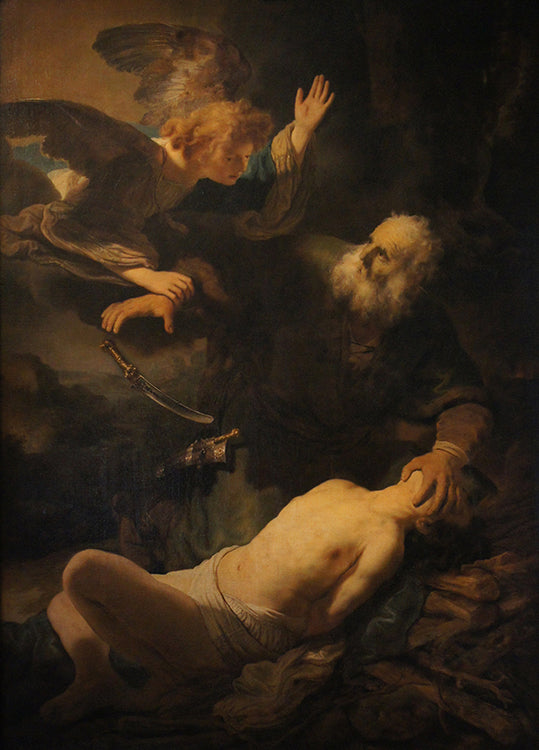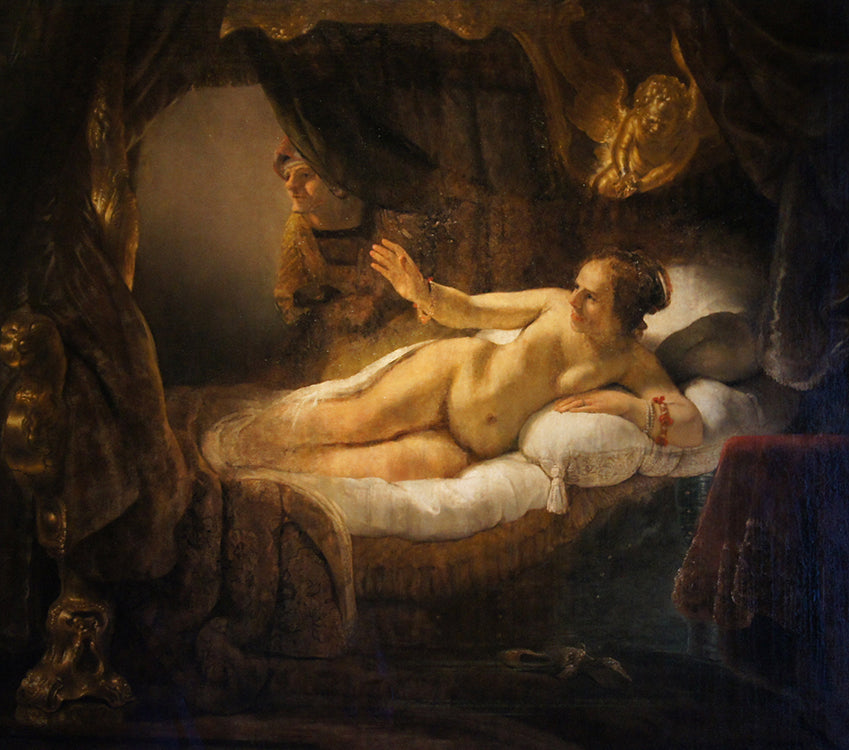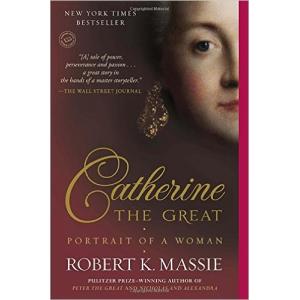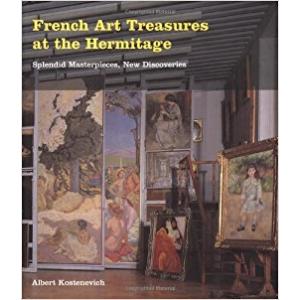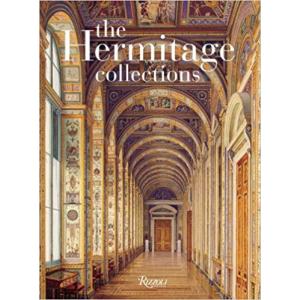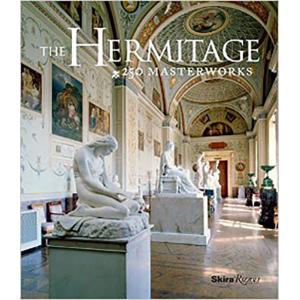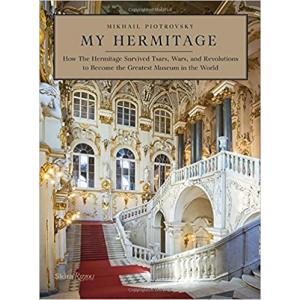Walpole Collection
by Cathy Locke

Paris Bordon, “Venus, Flora, Mars and Cupid” (1550s), oil on canvas, 42.5” x 51”, State Hermitage Museum, St. Petersburg.
Source of entry: Collection of Sir Robert Walpole, Houghton Hall, 1779.
By late 1778, Catherine the Great was alerted to another priceless family art collection in England – the famed Walpole Collection. Sir Robert Walpole, a British statesman and Whig politician, was considered the de facto first prime minister of Great Britain. The period of Walpole’s dominance, dubbed the “Robinocracy,” spanned from 1721 to 1742. He holds the record as the longest-serving British prime minister in history, which has been called one of the major feats of British political history. In fact, he held on to power longer than Margaret Thatcher and Tony Blair combined. In 1732, King George II offered Walpole the home at 10 Downing Street in London as personal gift, but Walpole accepted it only as the official residence of the First Lord of the Treasury. As Walpole’s success in parliament grew, so did his tastes for the finer things of life, and he built one of the greatest art collections ever. Like Catherine, Walpole skillfully exploited his colleague’s misfortunes. In 1725, he nabbed 19 portraits by Anthony van Dyck from the dissolute grandson of Philip, 4th Lord Wharton. This included portraits of the royal family, Charles I, and Inigo Jones. Walpole’s career was not without controversy; a well-known gambler, he dodged corruption charges for insider trading.
Walpole built a grand estate home in Norfolk which he called Houghton Hall and used it as his country seat. Houghton Hall became the home of the majority of his vast art collection as well as the home of his mistress Maria Skerrett. In 1745, at the age of 68, Robert Walpole’s health took a turn. When he died in March, he left a debt equivalent to more than $8 million today. His eldest son, also named Robert (Robert Walpole, 2nd Earl of Orford), sold all of his paintings in their London home as well as all the silver at Houghton Hall, without making a dent in the debt. He died six years after his father, leaving Houghton Hall, his title and the family debt to his unstable 21-year-old son, George Walpole, 3rd Earl of Orford. Unfortunately, George added to the family’s debt. He began selling off actual parts of Houghton Hall, like the exterior stone stairs. By 1773, Houghton Hall was half in ruin.1

Bartolomé Esteban Murillo, “Immaculate Conception” (c.1680), oil on canvas, 77” x 57”, State Hermitage Museum, St. Petersburg.
Source of entry: Collection of Sir Robert Walpole, Houghton Hall, 1779.
In the Fall of 1778, George hired James Christie, founder of the auction house, to value his grandfather’s paintings in secrecy. Knowledgeable about gems, not paintings, Christie consulted notable painters like Benjamin West, Giovanni Cipriani, and Philip Tassaert about the value of the collection. Russia’s ambassador to the Court of St. James’s, Alexsei Musin-Pushkin, quickly informed Catherine of the impending auction. Wasting no time, Catherine offered the equivalent of $10 million in today’s currency for the entire collection. By July 1779, George Walpole had agreed to sell the entire collection to Catherine. Like the Crozat Collection, there was a public outcry about the selling of what was considered a national art collection. The purchase of Walpole’s collection included eight Titians, 19 Rubens, 20 van Dycks, five Murillos, three works each by Veronese, Holbein, and Rembrandt, and two each by Velazquez and Raphael. Robert Walpole’s youngest son, Horace the 4th Earl of Orford, appealed to the art-loving King George III to buy the works for the Royal Collection, but he was preoccupied with the American War of Independence. Catherine dispatched the naval frigate Natalia to the closest port to Houghton Hall. In the Spring of 1779, 204 of Robert Walpole’s finest paintings were loaded onto the Natalia. Catherine gave George Walpole a gift of a full-length portrait of herself. After all of Sir Robert Walpole’s paintings were carried off to Russia, the only painting that hung in Houghton Hall was the portrait of Catherine II. In another twist of fate, in 1789 there was a great fire at Houghton Hall, and had the collection remained there it would have perished.
![Anthony van Dyck, [left] “Portrait of King Charles I” and [right] “Portrait of Queen Henrietta-Maria” (both portraits c.1638), oil on canvas, 87” x 52” each, State Hermitage Museum, St. Petersburg. Source of entry: Collection of Sir Robert Walpole, Hought Anthony van Dyck, [left] “Portrait of King Charles I” and [right] “Portrait of Queen Henrietta-Maria” (both portraits c.1638), oil on canvas, 87” x 52” each, State Hermitage Museum, St. Petersburg. Source of entry: Collection of Sir Robert Walpole, Hought](https://cdn.shopify.com/s/files/1/0621/0348/6708/files/charleshenrietta_lr.jpg)
Anthony van Dyck, [left] “Portrait of King Charles I” and [right] “Portrait of Queen Henrietta-Maria” (both portraits c.1638), oil on canvas, 87” x 52” each, State Hermitage Museum, St. Petersburg.
Source of entry: Collection of Sir Robert Walpole, Houghton Hall, 1779.
Among the national treasures England lost when Catherine II bought the Walpole Collection were the coronation portraits of King Charles I and Queen Henrietta-Maria (1638). Like many rulers, King Charles I of England used art as a way to promote his grandiose monarchy and actively sought talented artists to work for him. In 1632, Anthony van Dyck returned to London and was taken under the wing of the English court immediately, being knighted in July and at the same time receiving a pension of £200 a year to be a court painter. Charles I and Henrietta-Maria hardly ever sat for another painter while van Dyck lived. It was in England that van Dyck was able to develop his mature style of portraiture, where his clients had a “cavalier” relaxed elegance and ease. Van Dyck painted many portraits of men, most notably Charles I, with pointed short beards then in fashion; consequently, this particular kind of beard was named a Van Dyke. Van Dyck’s father was a cloth merchant and his mother a very talented embroiderer. At an early age Anthony van Dyck developed a keen talent for painting fanciful costumes. At 16 he joined the workshop of Peter Paul Rubens, who described him as his best pupil. While in England, van Dyck adopted a number of new techniques, including a widening of his palette to include more blues, pinks, yellows and greens. With courtiers lined up for his stylish portraits, he charged 50 to 60 pounds for a full-length painting. Van Dyck would paint the sitter’s head and hands, delegating the background landscape, drapery and costume to his assistants, before adding the finishing touches himself. This method of working allowed him to work on several portraits a day.

Rembrandt, “Sacrifice of Isaac” (1635), oil on canvas, 76” x 52”, State Hermitage Museum, St. Petersburg.
Source of entry: Collection of Sir Robert Walpole, Houghton Hall, 1779.
There are two version of the masterpiece Sacrifice of Isaac by Rembrandt. A copy of this painting is currently in Munich, which was painted by Rembrandt’s workshop. The original painting ended up in the collection of Sir Robert Walpole, which was purchased by Catherine II. During the latter half of the 1630s Rembrandt began painting dramatic, large-scale biblical and mythological scenes, such as Descent from the Cross (1634), Sacrifice of Isaac (1635) and Danaë (1636). It is during this period that we see Rembrandt developing his own voice as an artist. Painted at the age of 29, Sacrifice of Isaac is one of Rembrandt’s most successful and mature works of his career up to this point. In Sacrifice of Isaac, we see a composition that flows from the angel’s raised hand down to Isaac’s arched body. The circular motif is seen in the physical gestures of the three characters; even the abandoned knife is curved. Note the importance of hands in this painting: the angel’s left hand is pointing to heaven, while his right hand holds back Abraham’s left hand, forcing him to drop his knife. Abraham’s right hand holds down Isaac’s head, concealing his identity. Isaac’s helplessness is further reinforced by having both his hands bound behind his back, unseen. The theme of the painting centers around “the hand of God,” which Rembrandt has orchestrated masterfully. Directly under the knife, slightly above Isaac’s body, in the folds of the garments, we can read in Hebrew the name of Jehovah and a letter that signifies it is part of a quotation. Rembrandt did not know Hebrew, but many of his assistants and advisors did.2 The subtle insertion of Hebrew was probably done to speak to the original owner of this piece.
Sources
1. Walpole, Georgina, Anthony Hamond of Westacre – Correspondence, HMN 4/46/1-9 1792-1806, 1813. The National Archives (held at Norfolk Record Office). Retrieved June 22, 2013. Letters concerning the affairs of Georgina Walpole, natural daughter of Lord Orford.
2. Piotrovsky, Mikhail, My Hermitage: How the Hermitage Survived Tsars, Wars, and Revolutions to Become the Greatest Museum in the World; SkiraRizzoli, 2015; page 316
About the Author
Cathy Locke is an award-winning fine art painter, professor, published writer and lecturer. She is the editor-in-chief of Musings-on-art.org and specializes in Russian and European art.
Cathy Locke’s artwork – www.cathylocke.com


